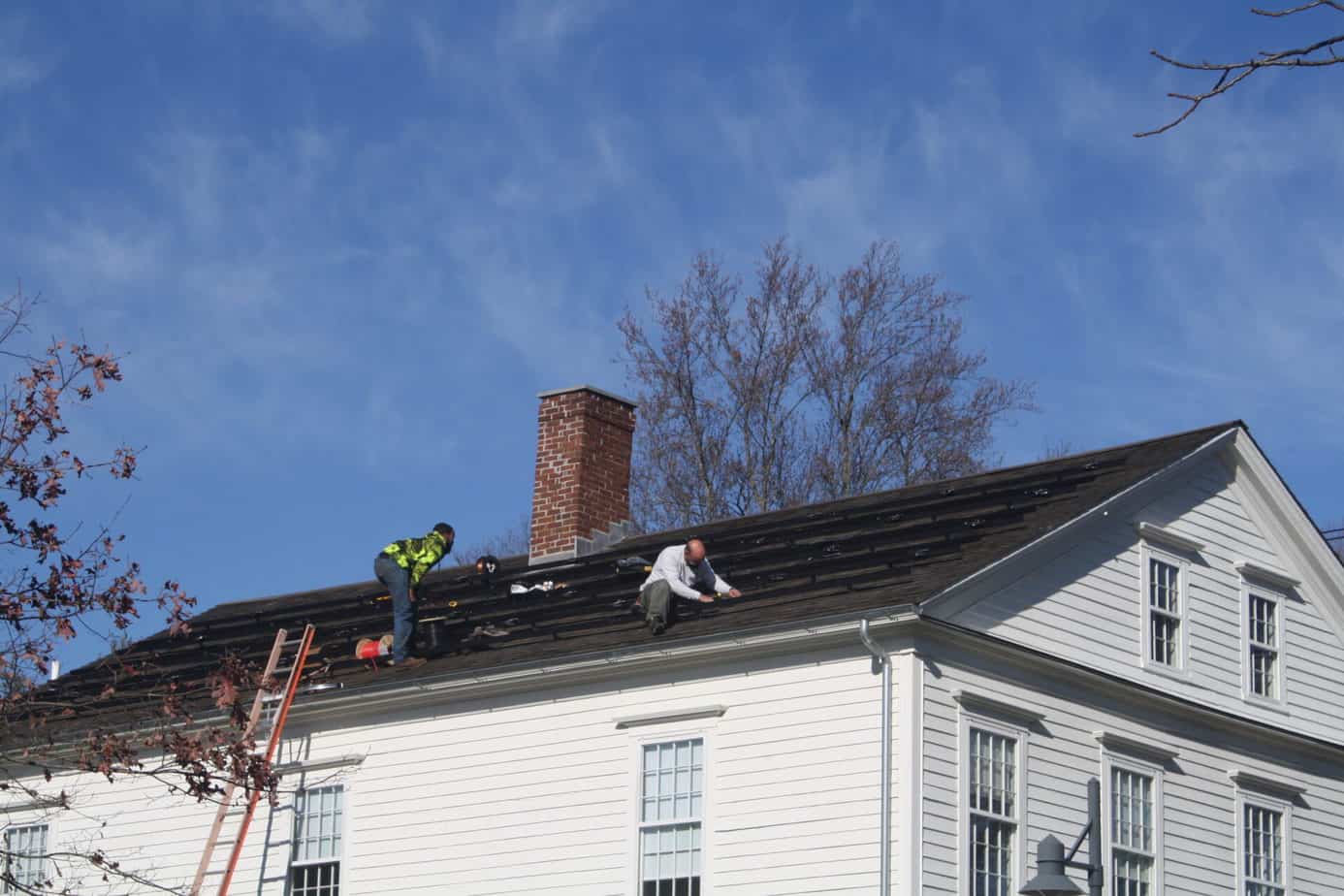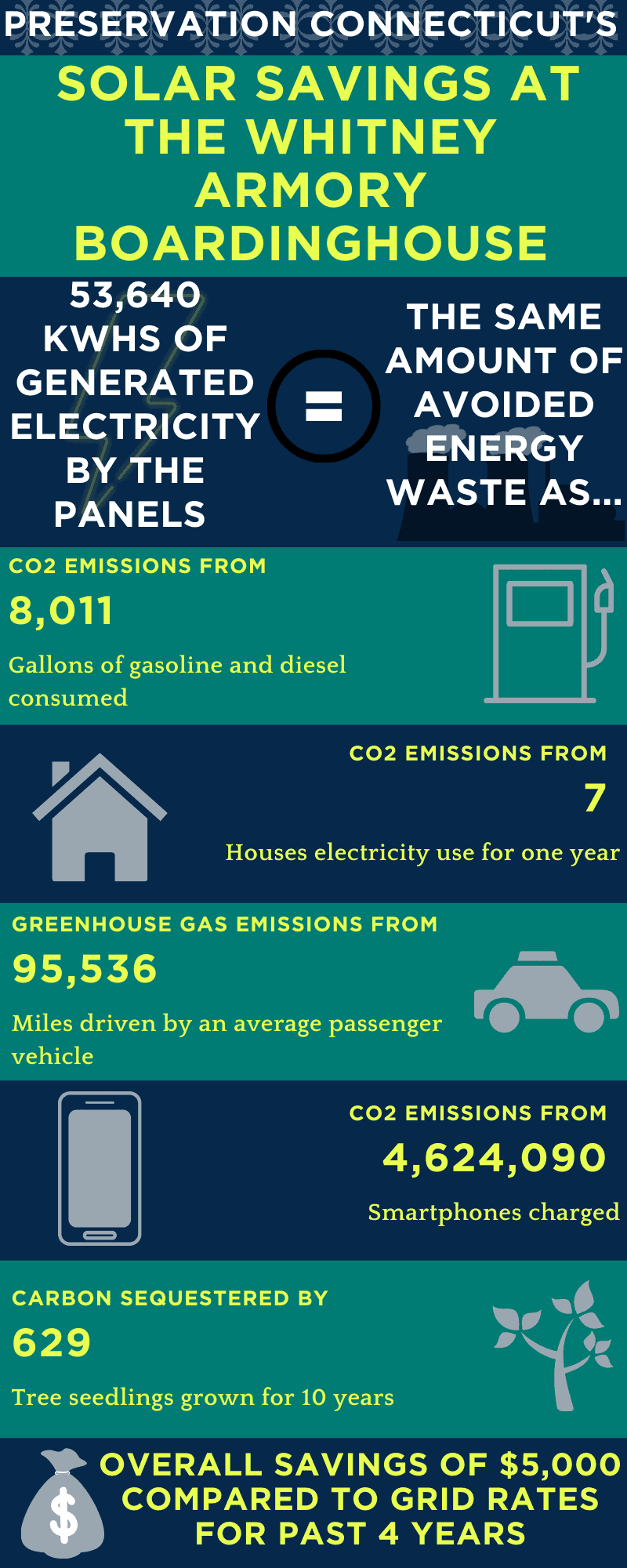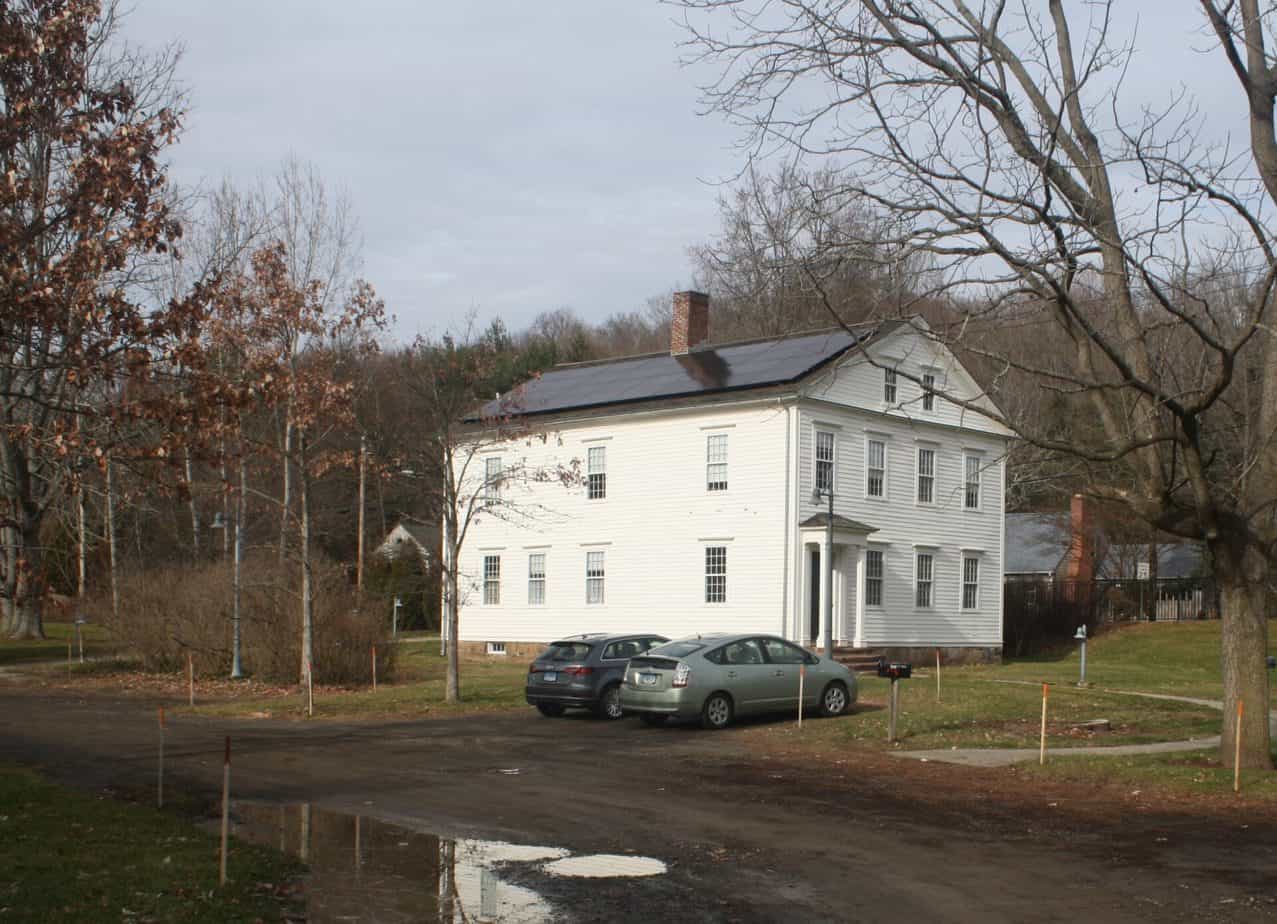Five years ago, Preservation Connecticut continued its journey to make our office building more sustainable by installing solar panels. For those of you who don’t know, our office is the historic Whitney Armory Boardinghouse, built in 1827 to house workers at Eli Whitney’s rifle factory and listed on the National Register of Historic Places. In addition to reaping the benefits of solar panels, we at Preservation Connecticut wanted to serve as an example of an energy efficient historic building. Our view on sustainability hasn’t changed, so what better time than Earth Day to do a solar panel check-in!

BACKING UP TO 2016
The decision to install a solar power system was motivated by the desire to conserve natural resources and save money but it was essential to do so in a way that did not detract from the building’s historic character. We minimized their intrusion on the building’s appearance by placing the panels on a side roof where they sit only four
inches above the surface, not altering the roofline. From the side angle, the panels are visible, but they blend nicely with our weathered wood-shingle roof.
Our solar panel installation had to be approved by the State Historic Preservation Office as a result of an easement. The SHPO supported our endeavor because the solar array is fully reversible, no historic material was removed at installation, and if the panels were removed the building would return to its original appearance.
RESULTS
So far, in their four-year lifetime, our 9.72 KiloWatt solar array has generated 53,640 kilo watt hours of electricity. What we pay for solar generation compared to the grid translates into a savings of $5,000 over the four-year lifetime. Not too shabby!
PRESERVATION=SUSTAINABILITY
We’ve said it a million times, but you’re going to keep hearing it: historic preservation is inherently sustainable because it promotes the reuse of existing buildings, basically recycling. In many cases, historic buildings were designed to conserve energy through their building mass, orientation to the

sun, and cross-ventilation. However, historic buildings also face challenges in efficient use of resources for operation. Here is where the potential for energy efficiency and technology upgrades comes in. We believe that to continue to be viable, buildings must adapt to sustainable technologies just as they have adapted to electricity, heating and cooling, and indoor plumbing. The potential of solar power, where feasible, to reduce electricity costs contributes to the preservation of historic buildings by helping them be economically competitive.
The main goal of our energy upgrade was not energy savings for one building; our goal was to be an example for other owners of historic buildings. The solar panels on our office illustrates that new sustainability technologies are indeed compatible with historic character and can be an effective way to bring historic preservation into the future.
Happy Earth Day!


